Fork Again When Process Done Linux
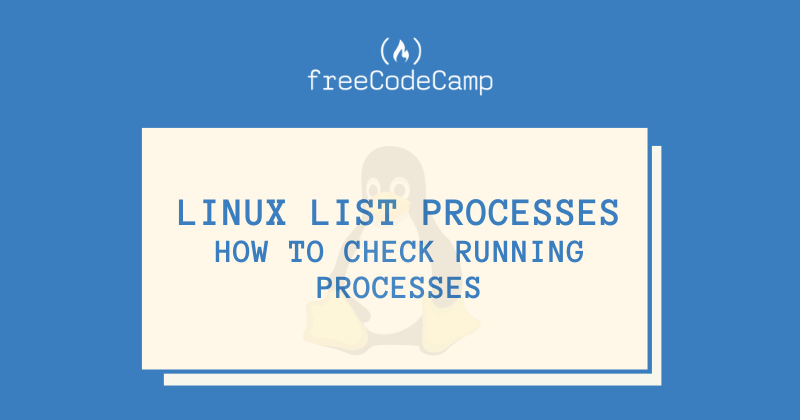
Every day, developers apply various applications and run commands in the terminal. These applications can include a browser, code editor, terminal, video conferencing app, or music player.
For each of these software applications that y'all open or commands y'all run, it creates a process or chore.
1 beautiful characteristic of the Linux operating organisation and of modern computers in general is that they provide support for multitasking. And then multiple programs tin run at the same fourth dimension.
Have you lot e'er wondered how yous can cheque all the programs running on your machine? And then this article is for you, as I'll prove you how to list, manage, and kill all the running processes on your Linux machine.
Prerequisites
- A Linux distro installed.
- Bones knowledge of navigating around the command-line.
- A smile on your face :)
A Quick Introduction to Linux Processes
A process is an instance of a running computer plan that you can detect in a software application or control.
For example, if you open your Visual Studio Code editor, that creates a process which volition only stop (or die) once you finish or close the Visual Studio Lawmaking awarding.
Likewise, when you lot run a command in the terminal (like scroll ifconfig.me), it creates a procedure that volition only stop when the command finishes executing or is terminated.
How to Listing Running Processes in Linux using the ps Command
Yous can list running processes using the ps command (ps ways process status). The ps command displays your currently running processes in real-time.
To exam this, simply open your terminal and run the ps command like so:
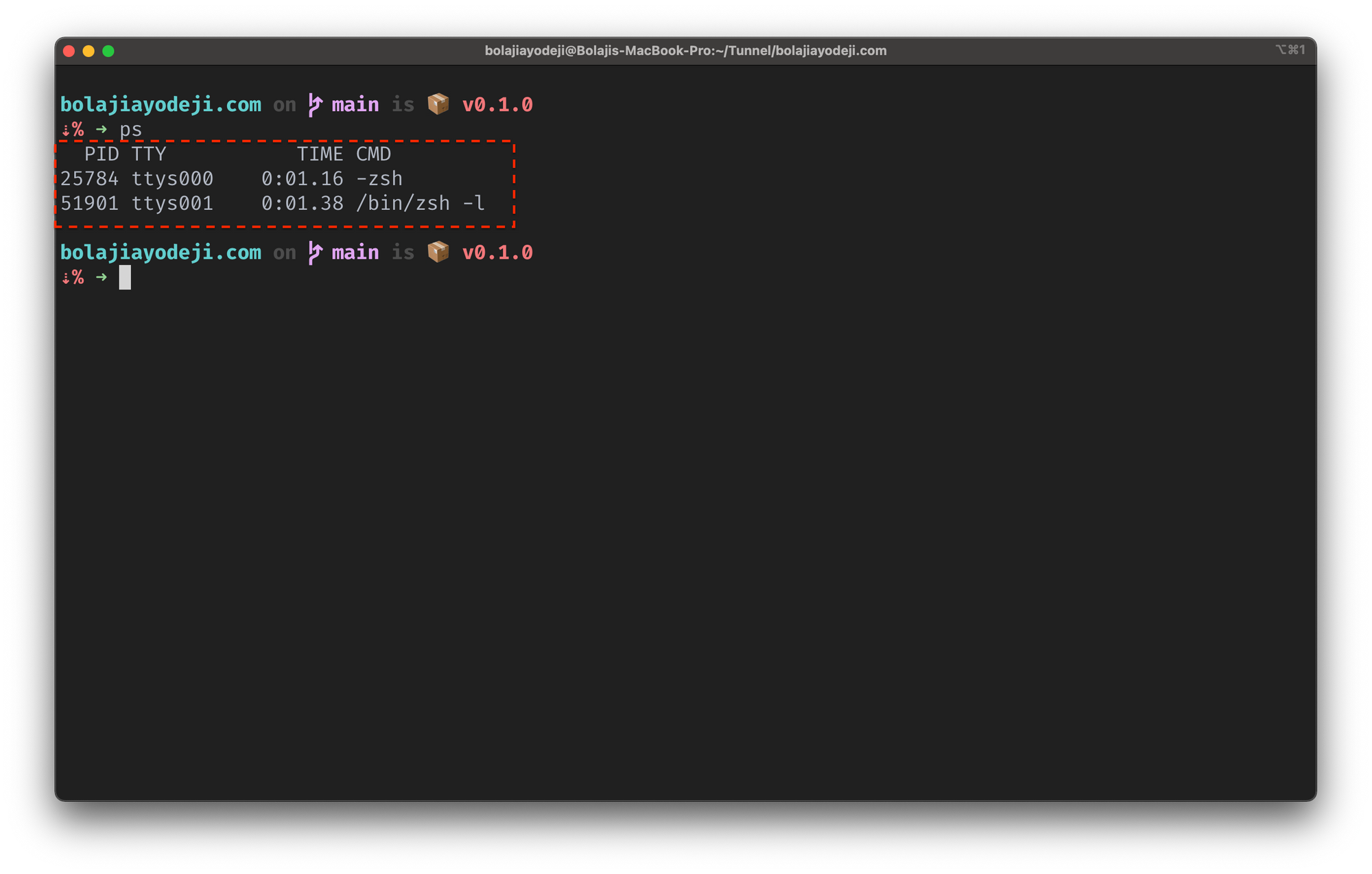
This will display the process for the current shell with iv columns:
- PID returns the unique process ID
- TTY returns the terminal type yous're logged into
- Time returns the full amount of CPU usage
- CMD returns the proper noun of the command that launched the process.
You can cull to display a sure ready of processes by using any combination of options (like -A -a, -C, -c, -d, -E, -e, -u, -X, -x, and others).
If you specify more than one of these options, then all processes which are matched by at least one of the given options volition be displayed.
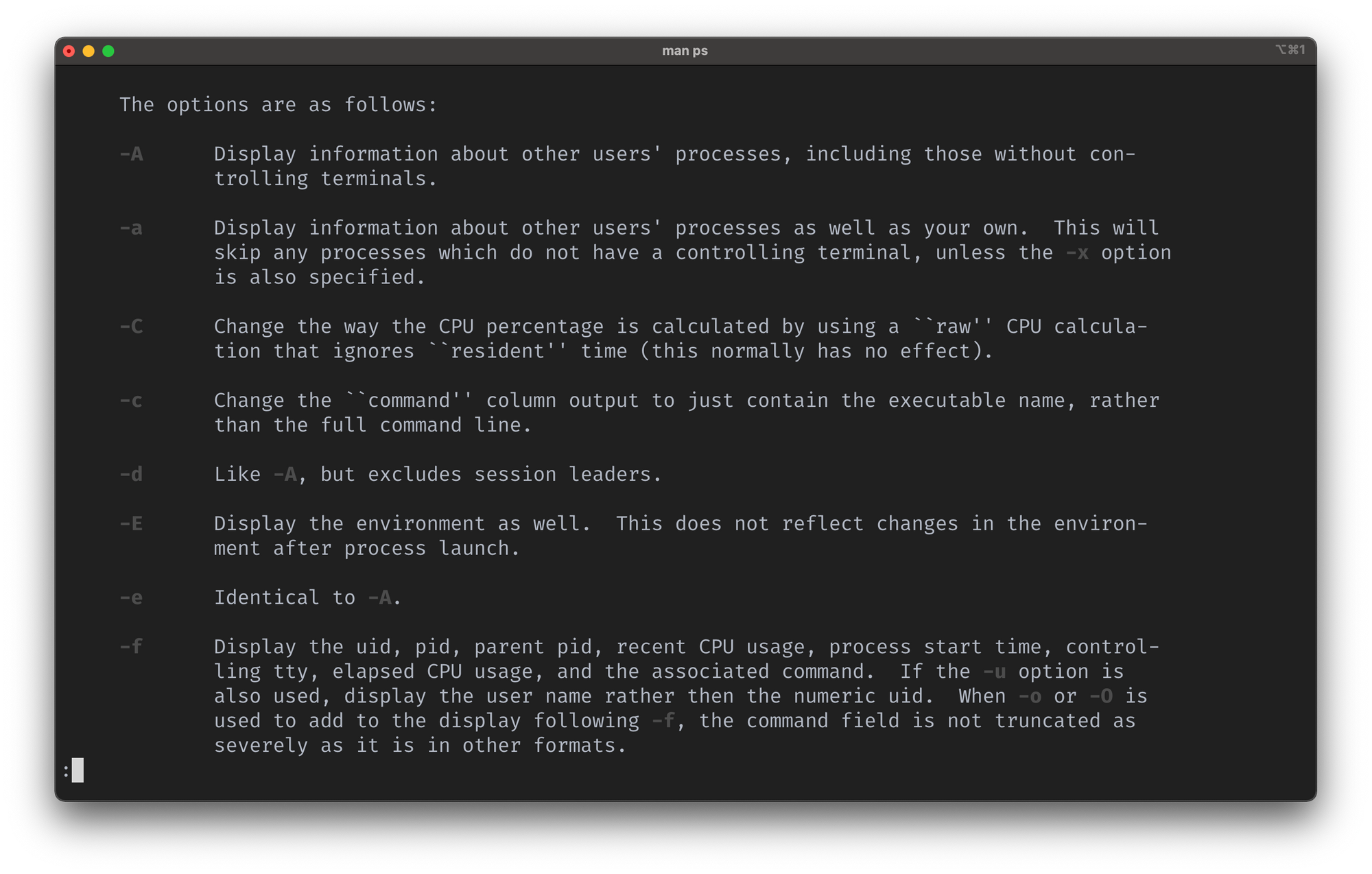
ps command manual page.Blazonman psin your terminal to read the manual for thepscommand, which has a complete reference for all options and their uses.
To brandish all running processes for all users on your car, including their usernames, and to show processes not attached to your terminal, y'all can use the command below:
ps aux Here'southward a breakdown of the command:
-
ps: is the process status command. -
a: displays information about other users' processes every bit well as your own. -
u: displays the processes belonging to the specified usernames. -
ten: includes processes that do not have a decision-making concluding.
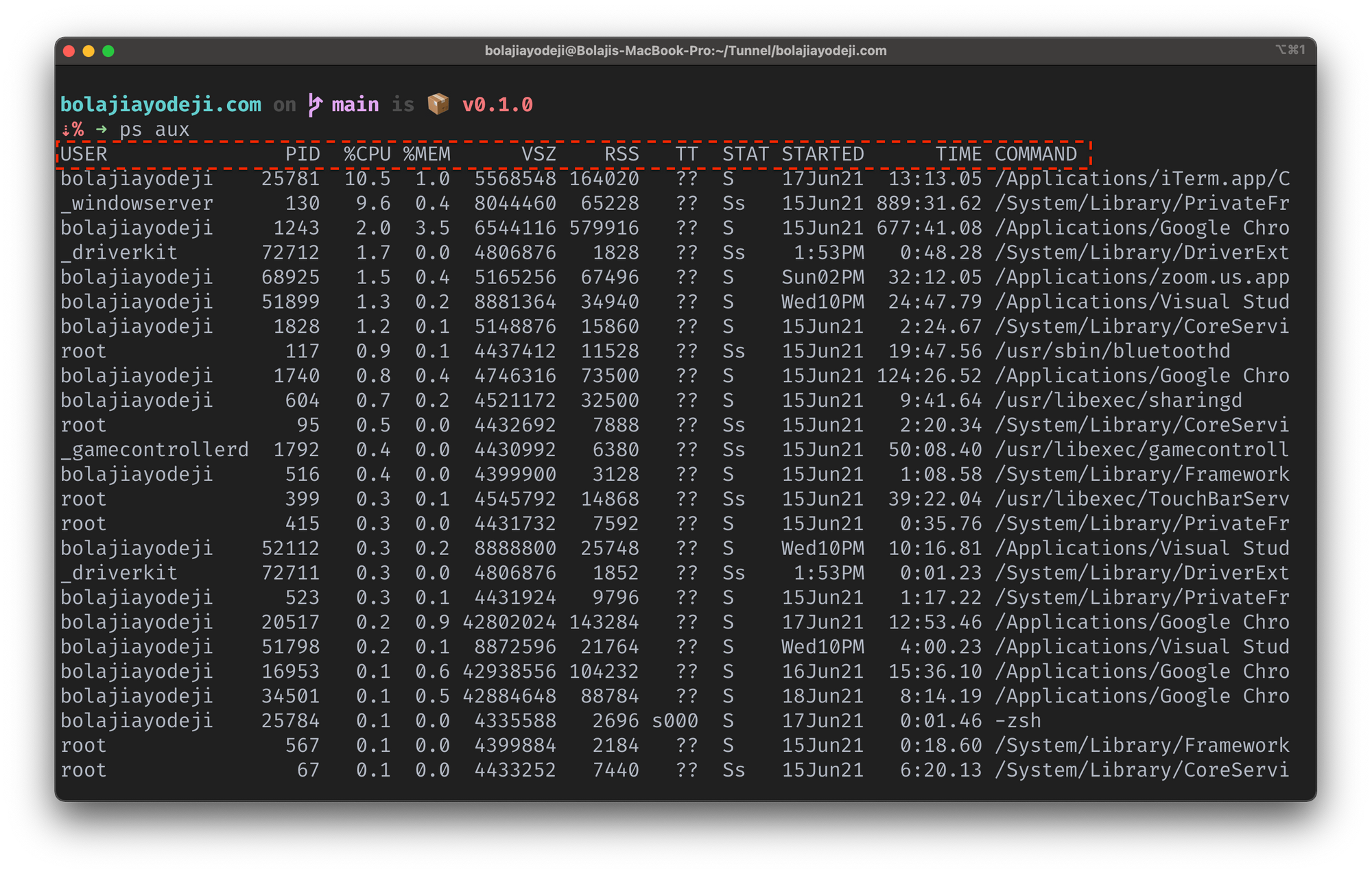
This will brandish the process for the current shell with eleven columns:
- USER returns the username of the user running the process
- PID returns the unique process ID
- %CPU returns the percentage of CPU usage
- %MEM returns the per centum memory usage
- VSV returns the virtual size in Kbytes
- RSS returns the resident set up size
- TT returns the control terminal name
- STAT returns the symbolic procedure country
- STARTED returns the fourth dimension started
- CMD returns the command that launched the process.
How to Listing Running Processes in Linux using the summit and htop Commands
You tin also use the top task manager command in Linux to meet a real-time sorted list of top processes that apply the most retentiveness or CPU.
Type pinnacle in your terminal and y'all'll get a issue like the one yous see in the screenshot beneath:
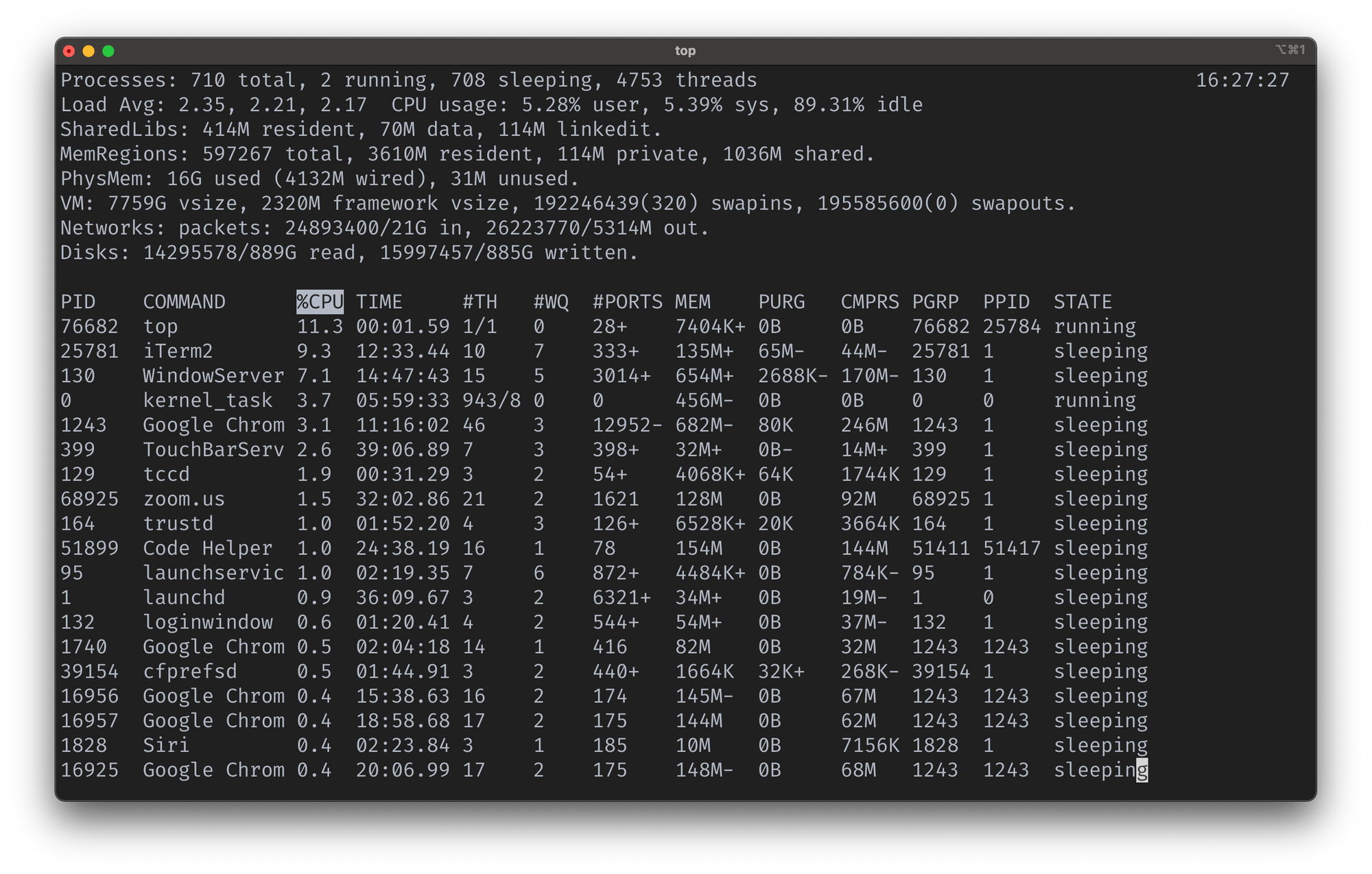
You tin type q to exit the session. An alternative to height is htop which provides an interactive system-monitor to view and manage processes. It too displays a real-fourth dimension sorted list of processes based on their CPU usage, and you can easily search, filter, and kill running processes.
htop is not installed on Linux past default, so you demand to install it using the control below or download the binaries for your preferred Linux distro.
sudo apt update && sudo apt install htop But type htop in your terminal and you'll get a result like the one you see in the screenshot below:
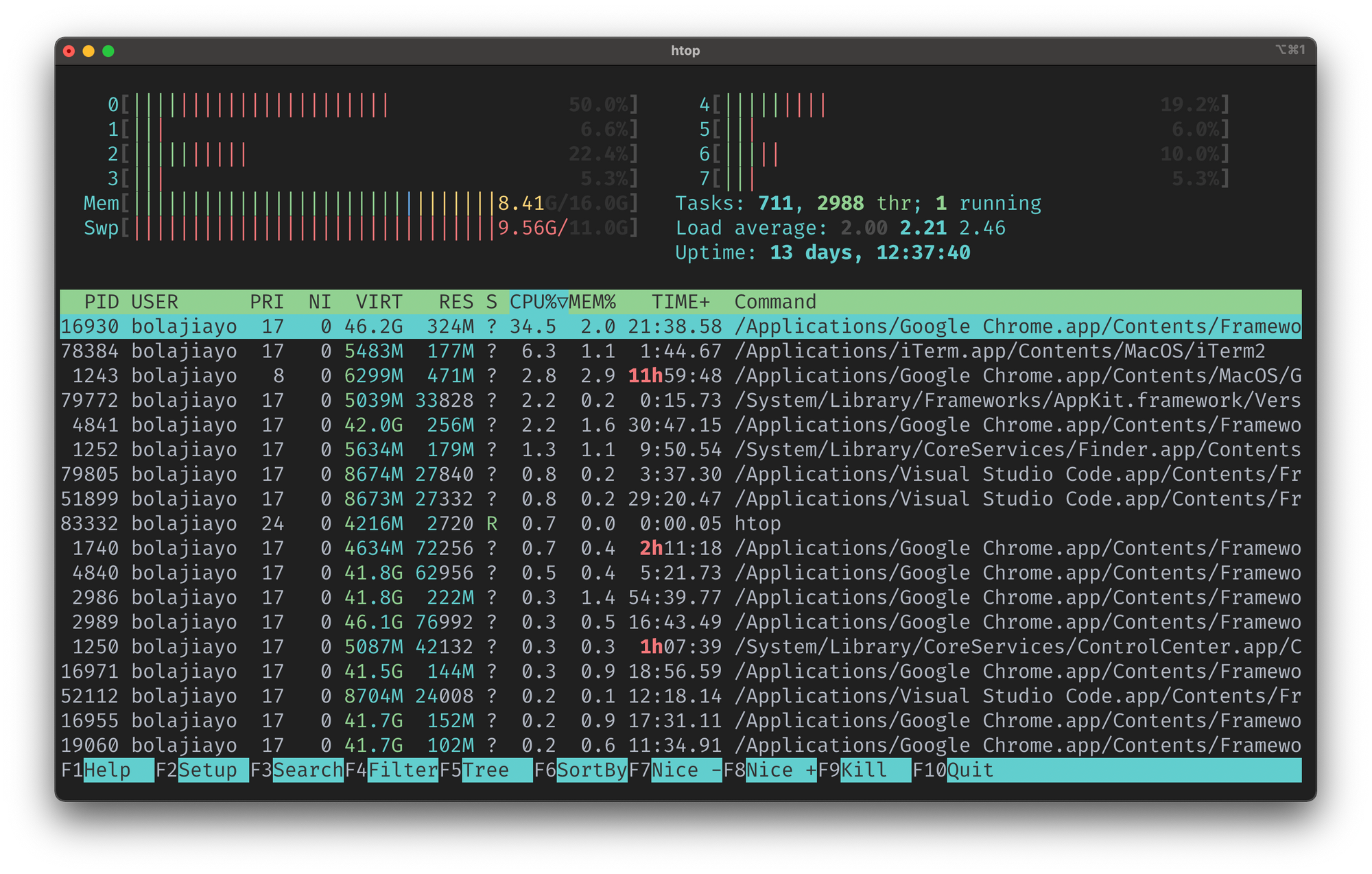
How to Impale Running Processes in Linux
Killing a process means that yous terminate a running application or control. You can impale a process by running the kill control with the process ID or the pkill control with the process proper noun similar so:
kill [PID] or
pkill [Command] To observe the process ID of a running process, you lot can use the pgrep command followed by the name of the process similar and so:
pgrep iTerm2 To impale the iTerm2 process in the screenshot above, we will use any of the commands below. This will automatically cease and close the iTerm2 process (awarding).
kill 25781 or
impale iTerm2 Conclusion
When you list running processes, it is usually a long and clustered list. Y'all can pipe information technology through less to display the command output one page at a time in your terminal like and then:
ps aux | less or display only a specific process that matches a particular proper noun like so:
ps aux | grep Chrome I promise that you at present understand what Linux processes are and how to manage them using the ps, elevation, and htop commands.
Make sure to check out the transmission for each command by running man ps, man top, or man htop respectively. The manual includes a comprehensive reference you lot can check if you demand whatever more help at whatsoever point.
Thanks for reading – thank you! 💙
Learn to lawmaking for free. freeCodeCamp's open source curriculum has helped more than 40,000 people get jobs every bit developers. Get started
Source: https://www.freecodecamp.org/news/linux-list-processes-how-to-check-running-processes/
0 Response to "Fork Again When Process Done Linux"
Post a Comment